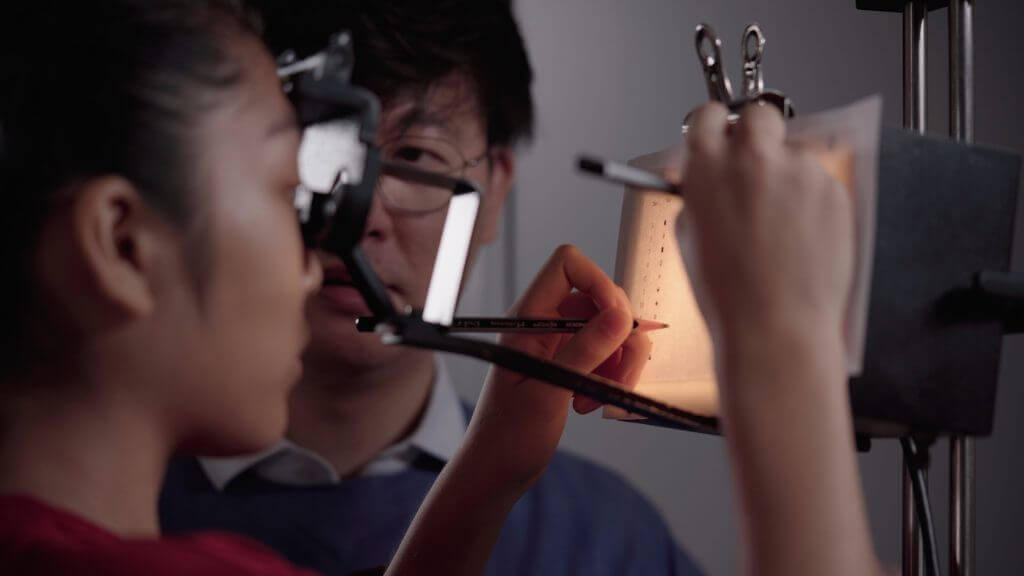Services
NEURO SCIENTIFIC SOLUTION TO IMPROVE YOUR SPORT GAME
Elevating Performance in Sports Through Enhanced Visual Skills
In the realm of sports such as Badminton, possessing superior visual skills offers a tangible advantage. Research has consistently shown that professional Badminton and tennis players outperform novices in crucial skills, such as anticipating the trajectory of the ball.
A highly developed dynamic acuity, the ability to maintain visual clarity amidst the constant motion of players and the ball, is as vital as having keen static acuity, which pertains to discerning the smallest details in a stationary setting, such as the net. In the fast-paced, visually demanding environment of Badminton, where the ball, players, and opponents are all in perpetual motion, the acquisition, processing, and resolution of information must occur with lightning-quick reaction times. Several vital dynamic skills are associated with excelling in sports such as Badminton:
Accommodation and Convergence: Exceptional focusing skills are pivotal in Badminton because of the constant, rapid movement of both the ball and opponents. Players must seamlessly shift their focus between near, far, and intermediate targets throughout the game.
Eye Tracking: The ability to track the rapidly changing positions and movements of opponents, the ball, and their relation to the net and boundary lines is crucial. Studies have revealed that if the head has to move to assist in eye tracking, it not only diminishes efficiency but also disrupts balance. The ultimate objective is to maintain focus on the ball until contact can be made, avoiding flinching upon impact.
Anticipation Timing: Badminton demands precise timing when receiving serves or making shots. Players have a mere fraction of a second to read and react to the type of serve chosen by their opponent. The ability to anticipate is a critical factor, as even superior physical attributes like speed, size, and reflexes cannot compensate for inadequate processing of visual information regarding when to execute a move.
Concentration: Sustaining a high level of concentration and focus is paramount in fast-paced sports like Badminton and tennis, especially when receiving a serve or playing at the net. Even a momentary lapse in concentration can result in losing a point in a game where each point holds significant importance.
Depth Perception
Depth perception plays a crucial role in various aspects of sports, such as accurate shot placement, assessing defensive positions of opponents, and making quick judgments about whether a ball will land in or out of bounds. This ability aids athletes in deciding whether to engage with the ball or let it go, and it is also essential for gauging the speed of an opponent’s shot, allowing for timely responses.
Eye Fatigue
Participating in demanding sports like badminton or tennis requires top-notch physical conditioning. Physical fatigue can have a significant impact on an athlete’s concentration, visual reaction time, and eye-hand coordination. Similarly, eye fatigue can affect performance by causing a general sense of tiredness. Just as athletes use weight lifting to enhance physical endurance, visual exercises can strengthen the eye muscles, reducing the effects of eye fatigue.
Eye-Hand Coordination
In racquet sports, particularly, eye-hand coordination stands as a fundamental skill. The act of striking a moving object with a racquet relies heavily on this coordination. Our hands, feet, and body respond to the information our eyes send to the brain. Even the slightest error in this information can lead to mistakes in physical reactions. Faulty visual judgment is often the root cause of errors or poorly executed plays in sports, making visual judgment the cornerstone of eye-hand coordination.
Peripheral Vision/Awareness
Whether playing offense or defense in badminton, a keen sense of peripheral vision and awareness is essential. An attacking player must maintain a sharp awareness of the incoming ball’s speed and position to ensure precise contact while also keeping peripheral tabs on the opponent’s position and court boundaries.
On the defensive side, players must focus centrally on the opponent’s court position and anticipate the ball’s likely trajectory off their opponent’s racket. Simultaneously, they must maintain peripheral awareness of the net, court boundaries, and other factors. These principles apply equally to doubles play, where players must also factor in the positions of their partners and their partners’ rackets.
Speed and Span of Recognition
Rodger Federer boasts a remarkable serve speed, with his fastest recorded serve clocking in at 143 mph, and his average serve speed falling within the range of 128.5 to 130 mph, as reported by the Sydney Morning Herald. Such velocities leave very little time for reaction! This holds true not only for professional players but also for their opponents in a match.
Even in a standard rally, the speed of a typical shot demands that a player swiftly discern the ball’s velocity and spin to execute a precise return. This entails visually tracking the ball as it leaves the opponent’s racket. The window of opportunity for executing a well-placed return shot is exceedingly brief, often lasting only fractions of a second. To be effective, characterized by swiftness, accuracy, and efficiency, the reflexive response must be ingrained and automatic, rather than a consciously thought-out process.


